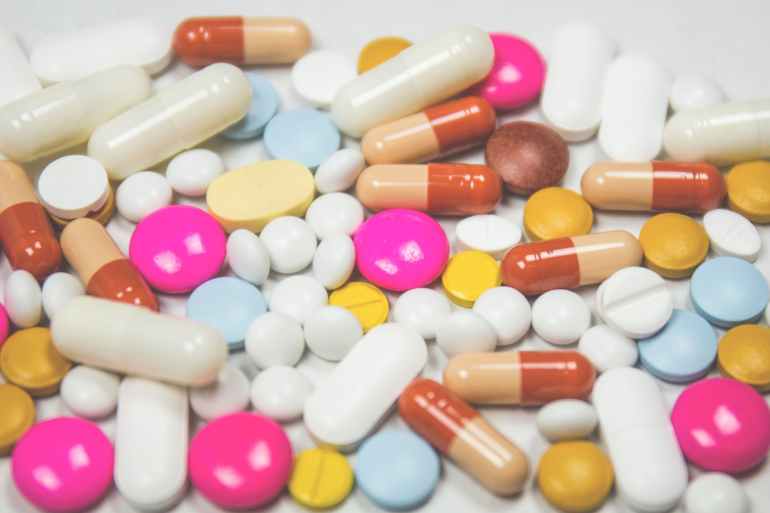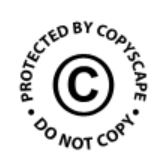
Many of us are witnessing the race of making and administering the COVID-19 vaccine. While a solution is much needed we remain perplexed on what it really takes to bring a drug or vaccine to market.
And while that information may be sought for appease curiosity, OurHealth understands that being somewhat familiar with the drug development process will increase health literacy that will enable people to make informed decisions. The Founder of OurHealth Crystal Crawford is a Sr. Life Science Professional for over 12 years. Her most recent role as a Senior Clinical Research Associate for Cancer Research involves her direct clinical monitoring of a new drug or therapy before it is approved by the FDA. Crystal and OurHealth feels that it is her social responsibility to educate her community on being responsible and well informed when using prescribed drugs or vaccines, or purchasing them over the counter. It takes 12 years and billions of dollars in clinical research and development to bring a drug to the market. And after the FDA approval is granted there is a required safety surveillance from pharmaceutical companies monitoring and reporting adverse events. Healthcare Professionals implement a lot of hard work into the production and operation of drug making. Clinical Research is heavily regulated by the manufactures and FDA and it takes many years and a lot of steps ensure that the drug remains safe and effective for people to use. Everything from qualification of a site to conduct the research, down to the labeling and packing by pharmaceutical engineers all play a crucial role in drug development. With that being said OurHealth would like to present a quick overview of the drug development process. Let’s start by discussing:
Discovery
During the discovery phase researchers typically scientist and epidemiologist discover the opportunity to make a new drugs through studying diseases and disease patterns as they move through populations. During the discovery phase drugs are compounded to determine which chemical compound shows promise as a treatment for a disease and may lead to the development of a new drug. Finding a lead compound is the first step in making a new drug to treat a disease. Drug compounding is often regarded as the process of combining, mixing, or altering ingredients to create a medication tailored to the needs of an individual patient. Overall what happens during this discovery phase:
- New insights into a disease process as diseases move through population allow researchers to design a product to stop or reverse the effects of the disease.
- For example, Let’s say for hypothetical purposes that a new emerging diseases pattern showed that adult men and women between the ages of 30-51-year-old have a high rate of hypertension in the metropolitan area. Therefore, this discovery presents the opportunity to create a new drug that can help treat that hypertension or stop it all together.
- From there many tests of molecular compounds take place to find possible beneficial effects against any of a large number of diseases (these compounds are vast!). In other words, they would be a need to create a treatment or drug that will help resolve the condition discovered.
- Now let’s say that there isn’t a need for a new drug to treat a new diseases but an existing one. Then the discovery phase will present the opportunity to create a new treatment because existing treatments may not have not worked in the past.
- Also in the discovery phase new technologies present the opportunity to optimize medicine, that provide new ways to target medical products to specific sites within the body or to manipulate genetic material.
At this stage in the process, thousands of compounds may be tested for 3 to 6 years for drug compounding. However, after early testing, only a small number about (10% out of 100%) of compounds look promising and call for further study. Once that compound is narrowed down to support the reason of discovery a new therapy, drug, or vaccine research is then moved to the Pre Clinical Phase.
Pre Clinical
The compound is now formulated and ready for the pre-clinical phase. Before testing a drug in people, researchers must find out what the potential to cause serious harm (side effects), also called toxicity. This is considered the pre-clinical phase which takes 1 year to 6 months to complete. There are two types of preclinical research:
- In Vitro- in a tube.
- In Vivo- in a living organism, usually in lab mice. (they are less expensive to obtain vs a cadaver andddddd the breed like nobody’s business).
Researchers basically need to determine the initial effect the drug has on the body and side effects.
Now the testing MUST adhere to FDA requirements. The FDA requires researchers to use good laboratory practices (GLP), defined in medical product development regulations, for preclinical laboratory studies. The GLP regulations are found in 21 CRF Part 58: 1 Good Laboratory Practices in Non-Clinical. These regulations set the minimum basic requirements for:
- Study conduct
- Personnel
- Facilities
- Equipment
- Written Protocols- (To which people in Crystal’s role will know the protocols inside and out!)
- Operating Procedures
- Study Reports
A system of quality assurance oversight for each study to help assure the safety of FDA-regulated product is required for each and every drug or vaccine that is being made in the US.
While preclinical research answers basic questions about a drug’s safety and side effects, it is not a substitute for studies of ways the drug will interact with the human body. “Clinical research” refers to studies, or trials, that are done in people. Before a clinical trial begins, researchers review prior information about the drug to develop research questions and objectives, depending on the therapeutic area i.e. Oncology, Rare Diseases etc.Once the compound is discovered, basic toxicity information is defined, and side effects identified the drug is now ready to began the Clinical Research Phase.
Here’s where Crystal’s role as a Clinical Research Associate/Clinical Scientist comes into play; wThen the FDA grants pharmaceutical companies the permission to make the drug but tells pharmaceutical companies “You want to make this drug we need Crystal to oversee the research to make sure that the patient’s rights and well being are being protected AT ALL TIMES and that your company is adhering to the protocol.” Those in Crystal’s role can see first hand what is to be expected in clinical trials in terms of safety, efficacy, and side effects long before it is approved by the FDA.
In Clinical Research drug developers or sponsors, must submit an Investigational New Drug (IND) application to the FDA first before beginning clinical research.
In the IND application, developers must include:
- Animal study data and toxicity (side effects that cause great harm) data.
- Manufacturing information.
- Clinical protocols (study plans) for studies to be conducted.
- Data from any prior human research.
- Information about the investigator.
The pharmaceutical companies outlines very specific parameters in an approved protocol that decides;
- Who qualifies to participate (selection criteria).
- How many people will be part of the study.
- How long the study will last.
- Whether there will be a control group and other ways to limit research bias.
- How the drug will be given to patients and at what dosage.
- What assessments will be conducted, when, and what data will be collected.
- How the data will be reviewed and analyzed.
Now that we have pre-clinical data that helps us understand side effects, a written protocol to help define what is being researched and why, it’s time to but that “puppy” to use. Clinical Research can not take place in human patients to see if it is safe and effective. Researchers design clinical trials to answer specific research questions related to a medical product. These trials follow a specific study plan, called a protocol, that is developed by the researcher or manufacture. Crystal’s role mainly entails traveling to different research centers that are conducting the trial and supervising the activity of the research staff and ensuring that they are adhering to the protocol, patient safety is being sustained, FDA requirements are being followed, and the integrity of the trial is being sustained. In other words, people in Crystal’s role is not only needed but required for the integrity of the clinical trial before it is approved by the FDA.
Now, in this role, healthcare professionals involved in clinical research must posse quantifiable knowledge and skill set to be able to have proper scientific knowledge that allows me to provide oversight of the trials including a profound knowledge in but not limited to Good Clinical Practices and 21 CFR requirement. Now before any drug can be tested on any human subject they must sign an Informed Consent. The human subject must be consented by a qualifying research staff member and fully informed on of every aspect of the study including risk, benefits and any compensation. That person must sign and date the consent and present it to the research staff member along with a HIPPA form.
The Informed Consent is very important when protecting the rights and well-being of the patient. This is derived from the Tuskegee Experiment when researchers illegally experimented on black men for 30 years purposely infecting them with syphilis and refused to treat them. The Informed Consent is the first document that people like Crystal look for while on site. For example, while on site Crystal would find the consent within a subject’s (patient) chart and will ensure that the person who consented this subject was delegated and qualified to do so and the patient had time to review this document, asked any questions that they may have etc. No experimental drug is legally administered to any patient without being presented with an Informed Consent and supplementary HIPPA forms. That consent must be signed and dated by the patient, qualifying Research Doctor and or research staff member and written in 5th grade English for fundamental understanding for the patient. There are no exceptions to this FDA requirement with experimental drugs.
Clinical Research happens in 4 phases over the course of about 10-11 years. Now that the drug has been narrowed down to a molecular compound, proven its need for usage, side effects are identified and the protocol is designed it is now ready to be tested on human subjects. Let’s look at the phases:
Phase 1- Determining the safety and maximum tolerated dose a human can safely take. This phase usually lasts for about 7 months. In complex therapeutic areas like oncology this is a very fast paced and challenging phase. Once a maximum dosage is determined then the research will move on to phase 2.
Phase 2– Determines how effective the drug is and what are the side effects (in humans). This phase usually lasts for several months up to 2 years with about 700 people being tested on. About %33 of the drugs make it to phase 3.
Phase 3– We’re (by we I mean Clinical Research Professionals) are getting closer to bringing the drug on the market! (relatively speaking). About 300-3,000 subjects are tested on and this phase lasts for about 4 years. The drug is now being monitored for any serious or non-serious side effects in a larger population of people. In addition this phase ensures that the drug is producing its desired intent aka efficacy and safety.
Phase 4– We made it! All of the long hours of Clinical Research Professional traveling from state to state, conducting research oversight the drug is now close to approval. About 7 thousand people are testing and we (again by we I mean Clinical Research Professionals) want to make sure the drug is safe and effective.
At Phase 4 the drug maker presents all of the research to the FDA to market the drug. Now, if a drug developer has evidence from its early tests and preclinical and clinical research that a drug is safe and effective for its intended use, the company can file an application to market the drug. This application is called a New Drug Application it tells the full story of the drug from the time of discovery until Phase 4. A lot I know! The NDA is to present evidence from its early tests and preclinical and clinical research phases that a drug is safe and effective for its intended use. From there the pharmaceutical company can file an application to market the drug.
A drug developer (or pharmaceutical company) must include everything about a drug—from preclinical data to Phase 3 trial data—in an NDA. Developers must include reports on all studies, data, and analyses. Along with clinical results, developers must include:
- Proposed Labeling
- Safety Updates
- Drug Abuse Information
- Patent Information
- Any data from studies that may have been conducted outside the United States
- Institutional review board compliance information
- Directions for use
The FDA will then place all of this information under review.
The final Step the FDA says yes or no to marketing your drug. Even though clinical trials provide important information on a drug’s efficacy and safety, it is impossible to have complete information about the safety of a drug at the time of approval. Despite the vigorous process of clinical research, limitations still exist. Unexpected events that may occur with the drug usage. This is why the Post Marketing and Safety Monitoring comes in. All drug manufacturers must have a safety surveillance program in place to ensure that they are properly monitoring and reporting any and all side effects of the drug. This department is usually referred to as Drug Safety or Pharmacovigilance. It is important for consumers to report any side effect or lack of effect for a drug to the drug makers. Reporting those unwanted or unexpected side effects is the only way they can have proper surveillance on a drug and ensure that it remains safe and effective for users.
You’re probably wondering “Yikes Crystal this is a typical day for you?? And her answer would be yes but she is adamant about people knowing that she loves her career! Crystal loves knowing that she plays a very important role to bringing new drugs and treatment to the market. But what she will advocate for is health literacy within her community to ensure that the genetic makeup of people who look like her is included into the advancement of medicine and that her community understands what it takes to bring health and hope to the population.
Now that you have a snap shot of what it takes to make a drug, OurHealth would like to encourage everyone to be responsible when taking any vaccine or drug. It is important to ask the right questions and be well informed about your health and what therapy you may need.
Please feel free to visit our Landing Page to learn more https://ourhealthllc.wixsite.com/ourway and if you have questions, or comments.
“OurHealth, OurWay”

